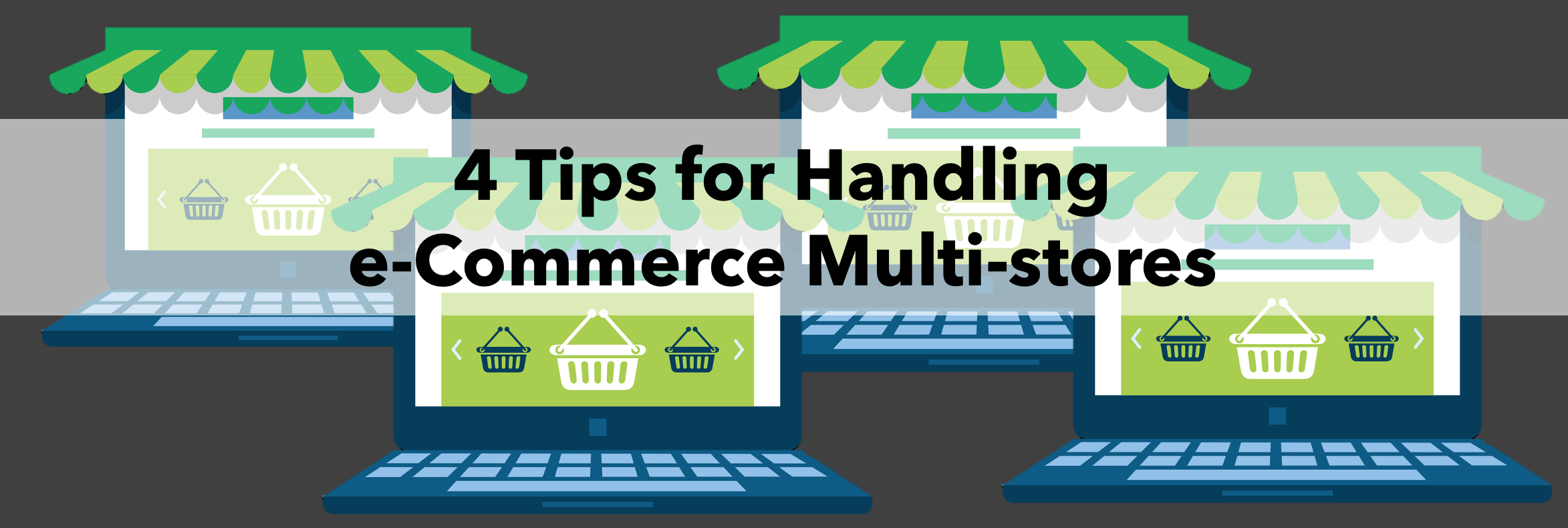Many online businesses use one e-store for all customer segments, offering a one-size-fits-all approach to e-Commerce. Despite the convenience of managing a single site, the approach may not be suitable for everyone. Using a "one-size-fits-all" e-Commerce site will not allow differentiation of products or address specific consumer cultures (languages, buying habits, usage). Through the implementation of multiple online stores, existing customers will be able to interact in a more personalised way, while also expanding into markets that were previously inaccessible. In this blog, you will find some tips on what to consider when planning a multi-eCommerce site.
1.Product Differentiation and Niche Marketing
Utilizing a product differentiation strategy, you should ensure each product e-Commerce site communicates the right message and value proposition, as well as ensure Brand’s message consistency across all e-commerce sites.
Another strategy is niche marketing, which targets a narrow geographic area, a specific income bracket, or a particular demographic. Designed to increase brand loyalty so that customers return more often, which results in a higher rate of return sales.
2. Creating Your SEO And E-Commerce Content Strategies
SEO (search engine optimization) for multiple online stores is a challenge. There are some things you need to consider when optimizing titles, headers, and meta descriptions for every online store. Having a few stores, say two or three, is manageable, but if you have hundreds or even thousands of sites, it becomes overwhelming to optimize each one.
e-Commerce SEO should include:
- Content marketing to attract organic customers. Build links to your website to increase its authority.
- Optimizing meta tags and content with strategic keywords.
- Research keywords that customers are searching for to identify how to create content that is relevant to them.
- Obtaining SEO success metrics with Google Analytics and Ahrefs.
- Selection of keywords for your site architecture.
3. Building Your Inventory Database
When managing multiple inventory systems, customer databases, and ordering systems, keeping the data consistent and up to date can prove a significant change. It is essential to maintain inventory databases to create multiple online stores. Discrepancies in stock levels are sure to occur when you manage separate inventories. You will have to reconcile your inventory manually if you are selling the same product on two sites. If you don't reconcile them regularly, you risk having inaccurate stock levels.
By keeping a single copy of the inventory database, organizations can save time and effort, as well as avoid situations where customers are expecting items that are out of stock.
4. Managing Your Order Management
In addition to managing inventory and processing payments, managing an online store also integrates several systems to ensure that they work smoothly together. A vendor with multiple stores may also find it challenging to integrate these systems.
It is recommended to centralise your order management system in the same way you centralise your inventory databases which will eliminate the necessity of manually pushing orders from different websites. As a result, you will have to maintain consistency in your fulfilment, customer care, and shipping processes across all your brands.
Final Thoughts
Multilingual and multicurrency support.
While providing services in the foreign language of the customer is a necessity in international eCommerce, some countries with the same language may also have slightly different needs that is because of cultural differences. Some businesses choose to set up separate storefronts for different regions in which they do business, so it is crucial to choose a platform that offers both multi-currency and multi-language support. Customer segmentation and personalization are the key elements of multi-store operations. Foreign customers' experience would be challenging if the site does not accept their currency and is not in their language.
You will enjoy immense growth opportunities if you partner with the right service provider. Get a better start with Zooloo. Our team is happy to assist you with your journey towards digital transformation. Please contact us at sales@zooloo.asia.
- Find some tips on B2B Sales Strategies
- Looking closer at Marketing Strategies
- Read about The Digital Transformation Journey
- Learn more about our “Digital Backbones”
Tags: #CRM #MicrosoftDynamics #digitaltransformation #B2B #digitaladoption #digitalintegration #digitalsolutions #wholesaletradesector #wholesaletrade






